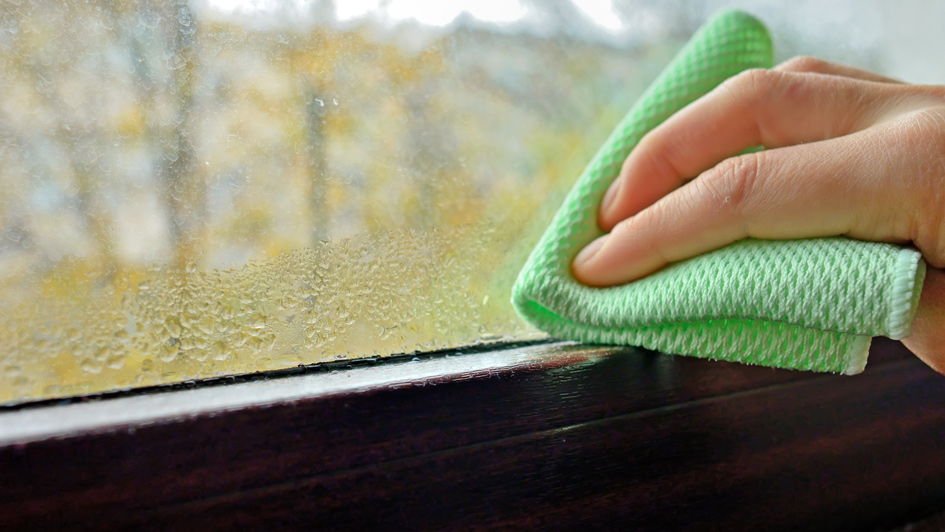
The windows throughout your home are a portal to the outdoors, a way to let light in when you enjoy the view of your garden, yard or scenery. The last thing you want to see is a sweaty window covered in a film of condensation.
Not only are windows coated in condensation unattractive, they also can be a sign of a more serious air-quality deficit throughout your home. Fortunately, there’s several things you can attempt to address the problem.
What Causes Condensation in Windows
Condensation on the inside of windows is created by the moist warm air inside your home hitting the cooler surface of the windows. It’s particularly commonplace over the winter when it’s much cooler outside than it is within your home.
Inside Moisture vs. In Between Panes
When dealing with condensation, it’s important to understand the contrast between moisture on the inside of your windows versus moisture in between the windowpanes. One is an air-quality issue and the other is a window issue.
- Moisture inside a window is produced from the warm humid air throughout your home forming against the glass.
- The moisture you find between windowpanes is produced when the window seal stops working and moisture slips between the two panes of glass, and by then the window needs to be repaired or replaced.
- Condensation on the inside of the windows isn’t a window situation and can instead be fixed by fine-tuning the humidity across your home. Many things cause humidity inside a home, such as showers, cooking, taking a bath or even breathing.
Why Indoor Sweating on Windows Could Mean Trouble
Although you might presume condensation inside your windows is a cosmetic concern, it may also be a sign your home has excess humidity. If this is the case, water may also be collecting on window frames, cold walls or other surfaces. Even a slim film of water can help wood surfaces to mildew or rot over time, fostering the growth of mildew or mold.
How to Decrease Humidity Inside Your Home
The good news is there are various options for removing moisture from the air throughout your home.
If you have a humidifier active inside your home – whether it be a small-scale unit or a whole-house humidifier – lower it further so the humidity inside your home goes down.
If you don’t have a humidifier running and your home’s humidity level is higher than you prefer, consider installing a dehumidifier. While humidifiers put moisture in your home so the air doesn’t dry out, a dehumidifier extracts excess moisture out of the air.
Small, portable dehumidifiers can absorb the water from a single room. However, those units require clearing water trays and usually service a somewhat limited area. A whole-house dehumidifier will remove moisture from your entire home.
Whole-house dehumidifier systems are managed by a humidistat, which allows you to specify a humidity level just like you would pick a temperature via your thermostat. The unit will run instantly when the humidity level overtakes the set level. These systems coordinate with your home’s HVAC system, so you will receive the best results if you contact qualified professionals for whole-house dehumidifier installation Milledgeville and Middle Georgia.
Additional Ways to Decrease Condensation on Windows
- Exhaust fans. Putting in exhaust fans around humidity hotspots including the bathroom, laundry room or above the stove can help by extracting the warm, moist air from these rooms out of your home before it can raise the humidity level throughout your home.
- Ceiling fans. Running ceiling fans can also keep air circulating throughout the home so humid air doesn’t get caught up in one area.
- Open window treatments. Opening the blinds or drapes can decrease condensation by stopping the damp air from being trapped against the windowpane.
By decreasing humidity inside your home and dispersing air throughout your home, you can take advantage of clear, moisture-free windows even in the middle of the winter.
